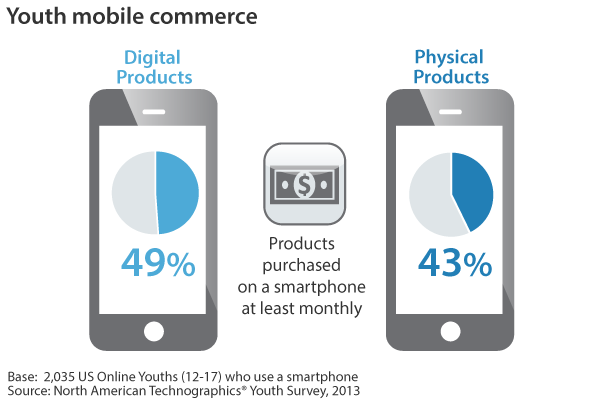The Data Digest: The Rising mCommerce Potential of Digital Natives
by Anjali Lai
Early last year, Forrester published a report profiling digital natives — youth ages 12 to 17. They've grown up in a world of rapidly evolving technology, to the extent that they can’t imagine life away from their devices. While digital natives weren’t yet heavy online buyers in early 2012, they often engaged in dialogue about products and brands and were receptive to advertising. Since then, young online consumers have continued to adopt devices and deepen their roots in the digital world; today, around 45% of this young audience uses a smartphone.
Characterized by their vibrant online presence and shaped by a culture of increasing connectivity, digital natives offer a new window of opportunity for marketers — one that stems not only from the audience’s advertising receptivity but also from their rapid adoption of digital commerce.
Forrester’s Consumer Technographics® data shows that mobile commerce among US online youth has increased over the recent years; today, nearly half of young online smartphone users purchase digital or physical products on their mobile phones:

Brands like Target are beginning to meet young consumers at the crossroads of their social and mobile engagement, a spot very familiar to digital natives. Social media sites like LinkedIn are becoming keenly aware of the youth market’s rising potential. My colleague Gina Sverdlov recently published a report that quantifies the impact of social engagements on retail behavior among digital natives. She asserts that marketing to this unique generation requires a new set of rules, revealing that young consumers “already have extremely high expectations of companies offering mobile content and experiences . . . [they] are accustomed to using multiple devices to connect . . . and they use their devices to connect to social media.” In our consumer-centric world, studying and establishing a relationship with this rising generation will not only lead to immediate payoffs but will also shape the consumer landscape of the future.